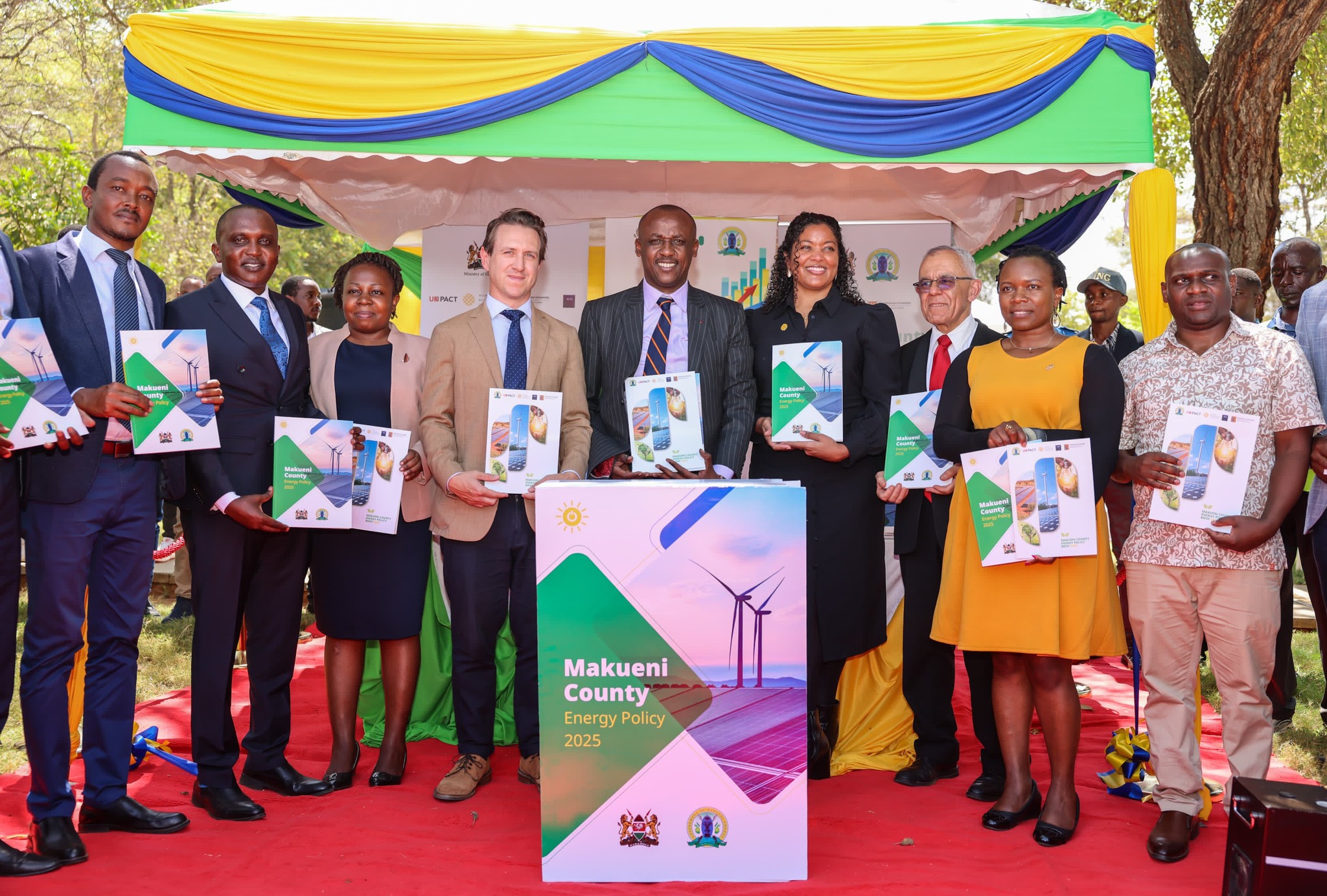 Makueni County Launches the Energy Policy. Photo Andrew Mbuva
Makueni County Launches the Energy Policy. Photo Andrew Mbuva
By Andrew Mbuva
Makueni County has taken a giant leap in Kenya’s green energy transition with the launch of its ambitious Energy Policy 2025, promising to deliver clean, affordable, and reliable power to households, schools, health facilities, and businesses across its six sub-counties.
Unveiled in Wote on Tuesday by Governor Mutula Kilonzo Jr., the policy builds on the foundations of the County Energy Plan 2023–2032, which has already transformed lives through solar power projects, expanded electricity connections, and pioneering clean cooking initiatives.
In the last financial year alone, the county invested KES 99.38 million in solar energy projects, implementing 44 installations with an estimated capacity of 810.8 kWp. Flagship among them is the 205.35 kWp solar system at Makueni County Referral Hospital, which has generated over 230,000 kWh in a year, cutting electricity costs by 30 percent and saving the county over KES 7.1 million. The project also avoided 120 tonnes of carbon dioxide emissions, cementing Makueni’s role in climate action.
Market centers too are glowing under the county’s green drive. More than 60 markets have been fitted with solar lights, alongside 70 grid-connected streetlights and five high-mast floodlights in major towns. This has improved security, reduced crime, and extended trading hours, boosting local commerce.
Grid access expansion has connected over 583 new customers across all sub-counties, including dairy cooperatives, villages, and institutions such as ACK Kitise, enhancing livelihoods and service delivery.
On clean cooking, Makueni rolled out a pilot project distributing 253 LPG cookers in Kikumbulyu South, with plans to expand to schools, health centers, and households through innovative public-private partnerships.
The new policy is the product of collaboration with UK PACT, Strathmore University, World Resources Institute, and Just Energy Transition Africa. Dan Wilcox of the British High Commission hailed the initiative as “trailblazing,” while Prof. Izael Da Silva of Strathmore University urged the national government to emulate Makueni, citing energy access as a driver of GDP growth.
Dr. Rebekah Shirley of the World Resources Institute praised the county for designing energy solutions that directly respond to community needs, ensuring inclusivity and sustainability.
Looking ahead, Makueni has approved 42 new energy projects for FY 2025/26, with a budget of KES 106.19 million, targeting water, health, agriculture, and trade sectors. Among the beneficiaries will be health facilities such as Ngaakaa Level III, Kalawa Sub-County Hospital, and Nziu Health Centre, all earmarked for solar installations.
Governor Mutula affirmed that the Energy Policy 2025 will ensure no village, school, or health facility is left behind in the clean energy journey.
“We are not just lighting homes, but powering development and opportunity for every Makueni resident,” he said.
With its comprehensive plan, Makueni is positioning itself as a national leader in sustainable energy, demonstrating how counties can drive Kenya’s green transition while improving everyday lives.